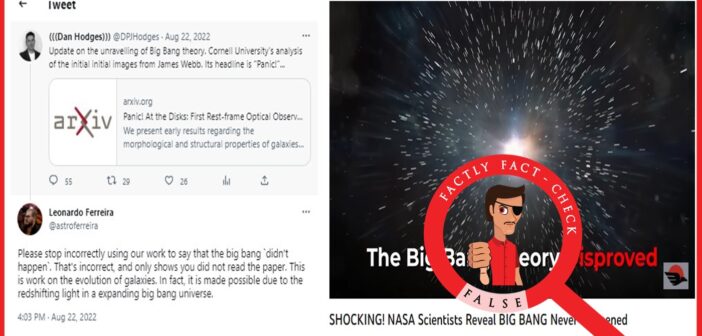A video is being widely shared on social media claiming that the observations from the James Webb Space Telescope (JWST) have disproved the existing widely accepted Big Bang theory. Let’s verify the claim made in the post.
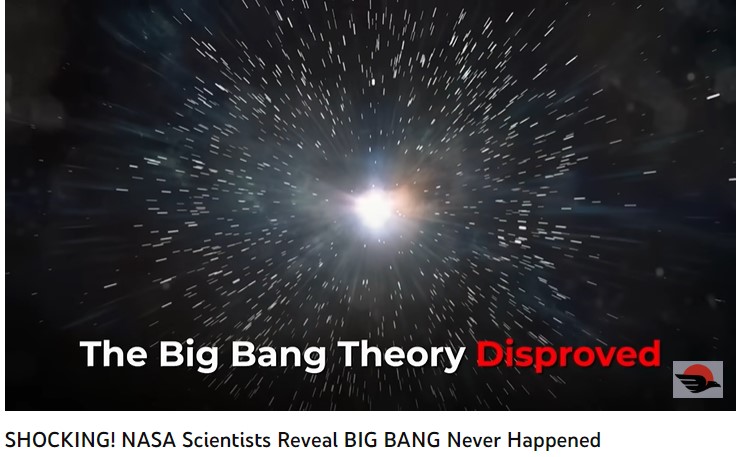
Claim: Observations from the James Webb Space Telescope have disproved the Big Bang theory.
Fact: There is no evidence to support this claim. In fact, a study based on JWST findings provides new insights into the structure and properties of galaxies in the early universe, which can help refine our understanding of the processes that drive galaxy formation and evolution over cosmic time. The study’s conclusions are actually in line with the predictions of the Big Bang theory and add to the body of evidence supporting this well-established scientific theory. Hence the claim made in the post is FALSE.
The video references a research paper published on Cornell University’s website on 19 July 2022, titled “Panic! At the Disks: First Rest-frame Optical Observations of Galaxy Structure at z>3 with JWST in the SMACS 0723 Field.” The video claims that the findings from the JWST, as presented in this paper, take a step towards disproving the Big Bang theory.
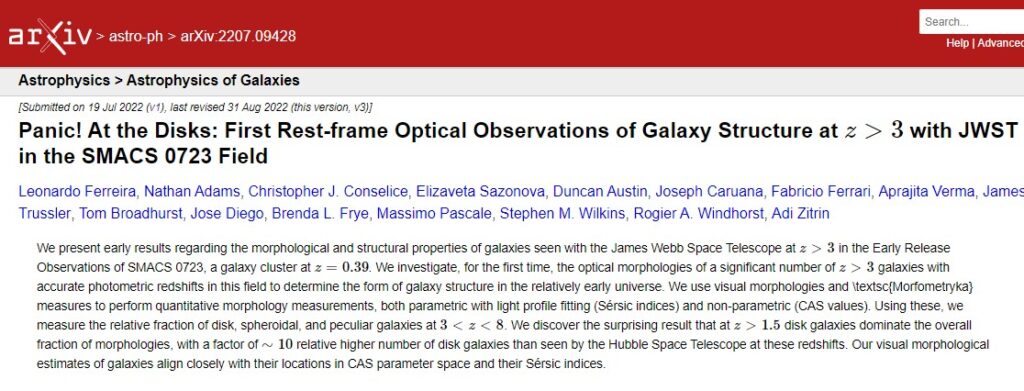
The James Webb Space Telescope (JWST), launched on 25 December 2021, is a powerful infrared observatory featuring a 6.5-meter primary mirror. Its mission is to investigate every stage of our Universe’s history. By primarily detecting infrared light, the telescope allows for the observation of sources such as the earliest galaxies and protostars, which emit radiation at these wavelengths.
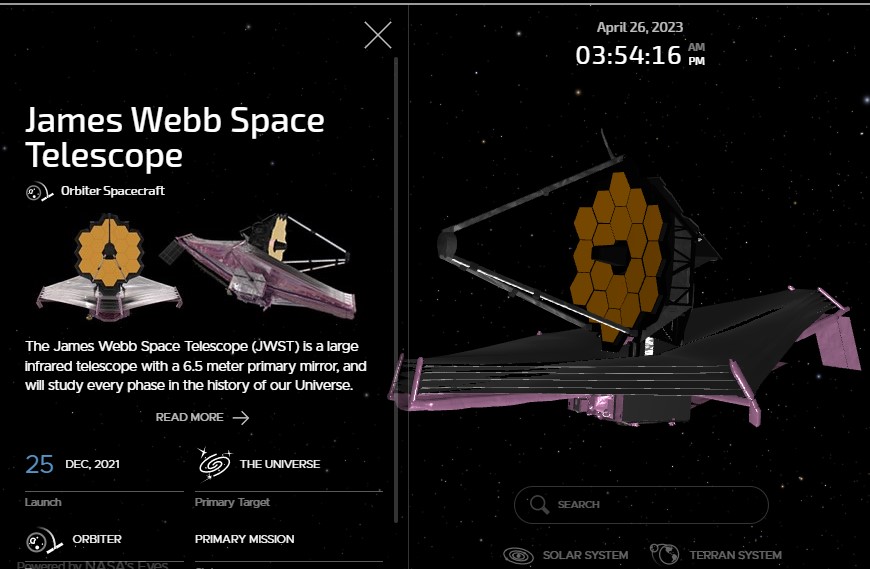
Regarding the study, the title’s phrase “Panic! At the Disks” is a playful reference to the American rock band “Panic! at the Disco,” and it doesn’t suggest any genuine concern or alarm about the galaxy disks being studied. Galaxy disks are thin, rotating structures composed of gas and dust, where stars are believed to form. In this research, the authors utilized data from the James Webb Space Telescope to examine the structure and properties of these disks in a population of distant galaxies that formed early in the universe’s history. The title’s term “z>3” denotes the redshift of these galaxies, which measures the degree to which their light has been stretched by the universe’s expansion. The “SMACS 0723 Field” phrase refers to the area of the sky where the studied galaxies are located, as observed by the Space Telescope Abell Cluster Survey (STACS) Multiwavelength Survey (SMACS).
Based on the Research, the authors make several important conclusions:
- The morphological types of galaxies change less quickly than previously believed, suggesting that normal galaxy structures formed much earlier than previously thought. This means that the way galaxies look, and their shapes don’t change as much over time as was previously believed. Normal galaxy structure seems to have formed much earlier in the history of the universe than previously thought.
- Disk galaxies are quite common at high redshifts (z>3), making up over 50% of the galaxy population. This is over 10 times higher than previously thought based on observations with the Hubble Space Telescope (HST). This means that the early universe was surprisingly full of disk galaxies, which was not known before the James Webb Space Telescope (JWST) was used to study them.
- Distant galaxies at high redshifts in the rest-frame optical are not as highly clumpy and asymmetric as once thought. This effect was not observed before because the HST could only probe ultraviolet light at high redshifts. The JWST’s ability to probe the rest-frame optical has shown that these galaxies are not as clumpy and asymmetric as previously believed. This allows the underlying mass of the galaxies to be traced and measured.
Do these findings disprove Big Bang Theory?
The Big Bang Theory is a well-established scientific theory that explains the origin and evolution of the universe, including the formation of galaxies, stars, and planets, as well as cosmic background radiation. The observations made in the study are consistent with the Big Bang theory, which predicts the formation and evolution of galaxies in the early universe.
The study’s findings do not contradict or disprove the Big Bang theory in any way. Rather, the study provides new insights into the structure and properties of galaxies in the early universe, which can help refine our understanding of the processes that drive galaxy formation and evolution over cosmic time. The study’s conclusions are actually in line with the predictions of the Big Bang theory and add to the body of evidence supporting this well-established scientific theory.
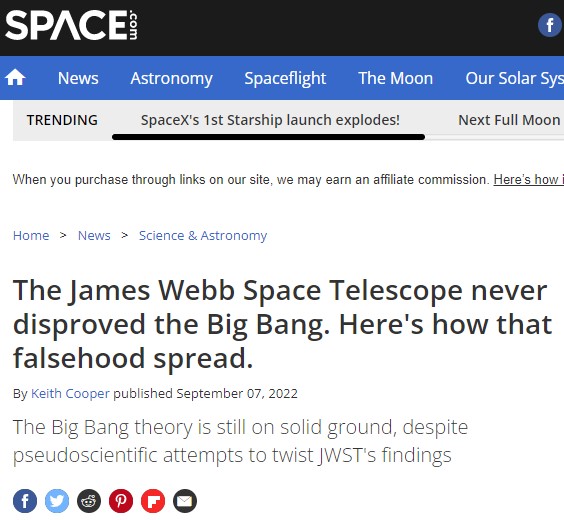
After some individuals misunderstood the study’s findings and claimed that the JWST had disproved the Big Bang theory, Leonard Ferreira, one of the authors of the research paper, along with several other astrophysicists, stated that the study had been misinterpreted.
To sum it up, while there may be ongoing debates and discussions in the scientific community about the details of the Big Bang theory, the study does not disprove the theory. Rather, it provides valuable new insights into the early universe’s structure and properties, which can help refine our understanding of the processes driving galaxy formation and evolution.


